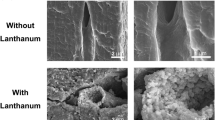Summary
Brain tissue from 11 patients with traumatic cerebral contusions submitted to surgery was studied. Control biopsy specimens were obtained from 5 patients undergoing ventriculo-peritoneal shunts for “communicating” hydrocephalus. After collection, the small fragments were fixed by immersion in glutaraldehyde-osmium and embedded in Epon. Semi-thin sections stained with toluidine blue were observed with the light microscope. Thin sections stained with lead citrate and uranyl acetate were observed using a Jeol electron microscope. In tissues from patients with head trauma a clear space most probably corresponding to fluid accumulation was systematically observed around microvessels. Ultrastructurally endothelial cells from these specimens exhibited signs of marked intracellular oedema, tight junctions being intact. Pinocytotic activity was increased, mainly at the abluminal surface. Swelling of astrocytic perivascular processes and the appearance of macrophagic cells with voluminous lysosomes were also observed. The authors conclude that the oedema of endothelial cells probably represent a central fact in the pathophysiology of traumatic brain oedema and speculate on the putative involvement of stretch-activated receptors in this condition.
Similar content being viewed by others
References
Bakay L, Lee JC, Lee GC,et al (1977) Experimental cerebral concussion. J Neurosurg 47: 525–531
Bouma GJ, Muizelaar JP, Choi SC,et al (1991) Cerebral circulation and metabolism after severe traumatic brain injury: the elusive role of ischemia. J Neurosurg 75: 685–693
Bruns D, Jahn R (1995) Real-time measurements of transmitter release from single synaptic vesicles. Nature 377: 62–65
Bullock R, Maxwell WL, Graham DI,et al (1991) Glial swelling following human cerebral contusion: an ultrastructural study. J Neurol Neurosurg Psychiatry 54: 427–437
Bullock R, Smith R, Favier J,et al (1985) Brain specific gravidity and CT scan measurements after human head injury. J Neurosurg 63: 64–68
Dixon CE, Lyeth BG, Povlishock JT (1987) A fluid percussion model of experimental brain injury in the rat. J Neurosurg 67: 110–119
Ebisu T, Naruse S, Horikawa Y,et al (1993) Discrimination between different types of white matter oedema with diffusionweighted MR imaging. J Magn Reson Imaging 3 (6): 863–868
Ellis EF, McKinney KA, Willoughby,et al (1995) A new model for rapid stretch-induced injury of cells in culture: characterization of the model using astrocytes. J Neurotrauma 12(3): 325–339
Foda MA, Marmarou A (1994) A new model of diffuse brain injury in rats. Part II — Morphological characterization. J Neurosurg 80: 301–313
Hagiwara N, Masuda H, Shoda M,et al (1992) Stretch-activated anion currents of rabbit cardiac myocytes. J Physiology 456: 283–302
Hariri RJ (1994) Cerebral oedema. Neurosurg Clin North Am 5(4): 687–706
Hekmatpanah J, Hekmatpanah CR (1992) Microvascular alterations following cerebral contusions in rats. J Neurosurg 62: 888–897
Kimelberg HK (1992) Astrocytic edema in CNS trauma. J Neurotrauma 9(1): S7-S8
Lang DA, Teasdale GH, MacPherson P,et al (1994) Diffuse brain swelling after head injury: more malignant in adults than in children? Neurosurg 80: 675–680
Liu HM, Sturner WQ (1988) Extravasation of plasma protein in brain trauma. Forensic Sci Int 38: 285–295
Lobato RD, Sarabia R, Cordobes F,et al (1988) Post traumatic cerebral hemispheric swelling — analysis of 55 cases studied with computerized tomography. J Neurosurg 68: 417–423
Long DM (1982) Traumatic brain edema. Clin Neurosurg 29: 174–202
Marmarou A (1994) Traumatic brain edema: an overview. Acta Neurochir (Wien) 60: 421–424
Marmarou A, Foda MA, Van der Brink,et al (1994) A new model of diffuse brain injury in rats. Part I — Pathophysiology and biomechanics. J Neurosurg 80: 291–300
Maxwell WL, Irvine A, Adams JH,et al (1988) Response of cerebral microvasculature to brain injury. J Pathol 155: 327–335
Miller JD, Bullock R, Graham DI,et al (1990) Ischemic brain damage in a model of acute subdural haematoma. Neurosurgery 27(3): 433–439
Naruse K, Sokabe M (1993) Involvement of stretch-activated ion channels in Ca mobilization to mechanical stretch in endothelial cells. Am J Physiol 264: 1037–1044
Oppenheimer DR (1968) Microscopic lesions in the brain following head injury. J Neurol Neurosurg Psychiatry 31: 299–306
Popp R, Hoyer I, Meyer J,et al (1992) Stretch-activated non selective cation channels in the antiluminal membrane of porcine cerebral capillaries. J Physiol 454: 435–449
Rinder L, Olsson Y (1968) Studies on vascular permeability changes in experimental brain concussion. I — Distribution of circulating fluorescein indicators in brain and cervical cord after sudden mechanical loading of the brain. Acta Neuropathol 11: 183–200
Sevick RJ, Kanda F, Mintorovich J,et al (1992) Cytotoxic brain edema: assessment with diffusion-weighted MR imaging. Radiology 185(3): 687–690
Shapira Y, Sutton D, Artru AA (1993) Blood-brain barrier permeability, cerebral edema and neurologic function after closed head injury in rats. Anesth Analg 77: 141–148
Sulivan HG, Martinez J, Becker DP,et al (1976) Fluid-percussion model of mechanical brain injury in the cat. J Neurosurg 45: 520–534
Takei K, McPherson PS, Schmid SL,et al (1995) Tubular membrane invaginations coated by dymamim rings are induced by GTP-S in nerve terminals. Nature 374: 186–190
Toulmond S, Duval D, Serrano A,et al (1993) Biomechanical and histological alterations induced by fluid-percussion brain injury in the rat. Brain Res 620: 24–31
Tornheim PA, Laurie FY, Wagner KL,et al (1985) Acute responses to experimental blunt head trauma: topography of white matter edema. Brain Res 337: 81–90
Tornheim PA, Liwnicz BH, Hirsch CS,et al (1983) Acute responses to blunt head trauma — experimental model and gross pathology. J Neurosurg 59: 431–438
Tornheim PA, McLaurin RL (1981) Acute changes in regional brain water content following experimental closed head injury. J Neurosurg 55: 407–413
Tornheim PA, Prioleau GR, McLaurin RL (1984) Acute responses to blunt head trauma-topography of cerebral cortical edema. J Neurosurg 60: 473–480
Author information
Authors and Affiliations
Additional information
An erratum to this article is available at http://dx.doi.org/10.1007/s00701-008-1511-3.
Rights and permissions
About this article
Cite this article
Vaz, R., Sarmento, A., Borges, N. et al. Ultrastructural study of brain microvessels in patients with traumatic cerebral contusions. Acta neurochir 139, 215–220 (1997). https://doi.org/10.1007/BF01844754
Issue Date:
DOI: https://doi.org/10.1007/BF01844754




